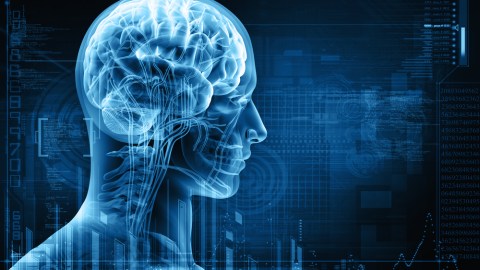Sign up for Big Think on Substack
The most surprising and impactful new stories delivered to your inbox every week, for free.
In the human brain, 100 billion neurons are connected by 100 trillion synapses. And, really, this staggeringly complex structure is only the beginning. (Consider that there may be roughly one hundred thousand trillion electrical signals traversing the brain in one second.)
Can we build a working model of our brain, or is it still too formidable for complete scientific study? The key insight to answer this question comes from looking at something far, far simpler.
Transparent and only one millimeter long, C. elegans worms are used in thousands of biology experiments as a ubiquitous invertebrate “lab rat.” Each worm has exactly 302 neurons (connected by roughly 5,000-7,000 synapses). We know this because many scientists have counted the number of cells; each worm always contains 959 cells (hermaphrodite) or 1031 cells (male- which also contains 81 extra neurons in its tail).
C. elegans was the first animal to have its genome sequenced. We can freeze it in liquid nitrogen and revive it. We can track it in 3-D. You can browse a library of its complete genome, its proteome (like the genome, but proteins) and even its whole nervous system on the internet. Science has studied this organism more thoroughly than any other — with the possible exception of the fruit fly and the laboratory mouse — in the entire animal kingdom.
If we can get inside any mind in nature, this would be the one. We’ve had a map of every neuron and every neural connection in the brain of the worm for more than 20 years. Here is a complete picture:
Plenty of high quality, useful research has been produced using this knowledge of C. elegans‘ brain. Scientists can tie reflexes and simple behaviors of the worm to individual neural pathways or circuits in the brain.
Further, we’ve been working on simulations of the C. elegans brain for at least 10 years. Can we use this to model or predict the actions of the worm? No. We’re not even close. In fact, it takes a computer with a billion transistors to make a weak, incorrect guess at what a worm with 302 brain cells will do.
If we can’t simulate 302 neurons and 5,000 synapses, how can we hope to conquer 100,000,000,000 and 100,000,000,000,000? Let’s not even get started on the 100,000,000,000,000,000 electrical signals per second that form the traffic on that neural road network.
Science always has to start at the very simplest level and work its way up. We build on our previous knowledge and eventually arrive at enormous achievements. Further research on this topic is absolutely important; some day we may very well be able to model the brain of a worm and even a human. However, at the present, there is simply no way that a comprehensive human brain simulation will be feasible in the near future.
So, no
mind uploading yet. Sorry, Ray Kurzweil.
Sign up for Big Think on Substack
The most surprising and impactful new stories delivered to your inbox every week, for free.







